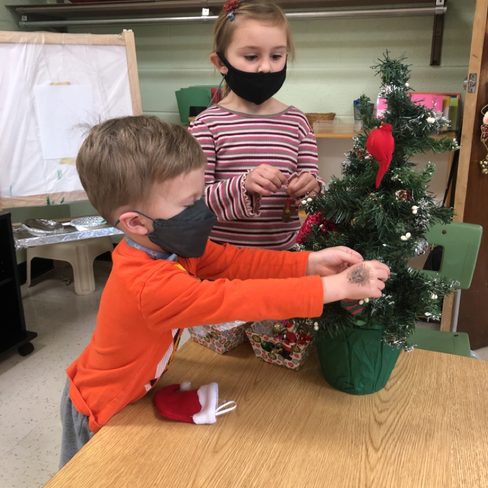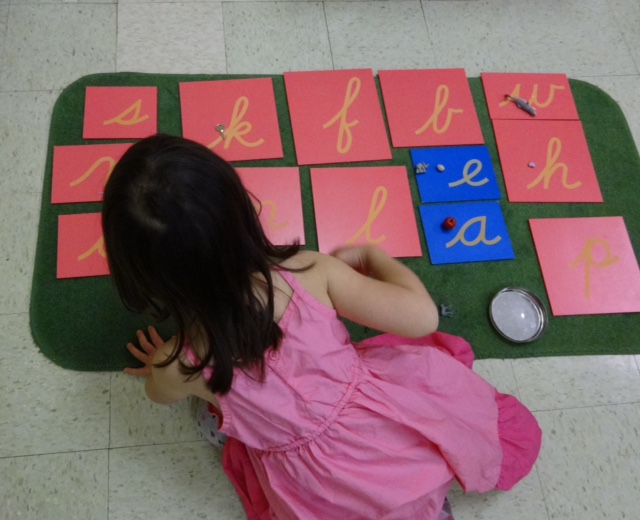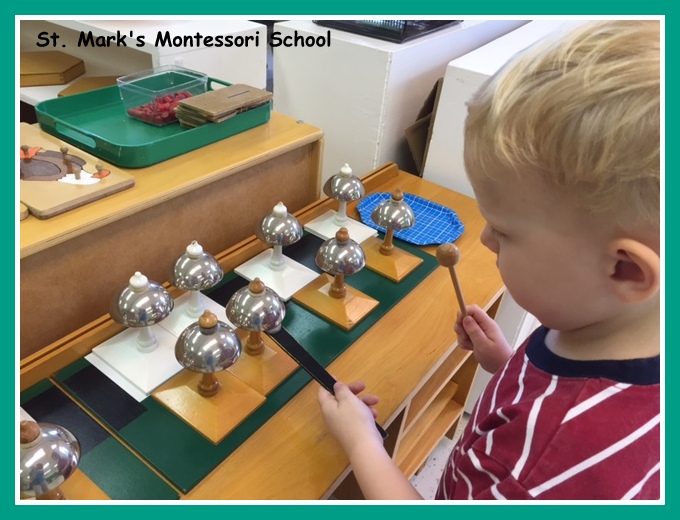
Quick Links
Primary Program
St. Mark’s directly follows Montessori’s philosophy and method. The classroom environment is designed to attract and cultivate the child’s natural desire to learn. The classrooms are equipped with beautiful hands-on material that encourage students to explore and discover on their own, motivated by natural curiosity and love for knowledge.
The teachers at St. Mark’s act as guides, giving individual lessons to each child based on readiness and development. The teacher carefully observes the progress of each child and keeps a record of his or her work. She is trained to recognize the periods of readiness of each individual, and when a task has been succeeded.
Our program is a three-year Primary Program, with children ideally entering at the age of 3 and completing their Three Year Cycle-until the age of 6. Each class is a multi-age class by design. This gives the students the opportunity to teach and learn from each other. All while cultivating, the importance of teamwork, respect, and social interactions.
Curriculum
Practical Life

Practical life refers to the simple things we do to take care of ourselves and our environment. Some of these activities may include learning how to button and zip, pour water, wash tables, serve food, and water the plants. Every activity aids in developing coordination, concentration, and independence.
Sensorial

Sensorial materials allow children to refine their senses to better discriminate and appreciate the world in which they live. Students learn to make finer distinctions through seeing, touching, smelling, tasting, and listening as they engage in activities such as building the Pink Tower, feeling sandpaper touch boards, sorting color tablets, and playing the bells. The Montessori sensorial materials help the child to distinguish, to categorize, and to relate new information to what she already knows.
Language

Language is offered throughout the day through conversations, stories and poems. Sandpaper letters introduce the young child to the sounds that letters make through seeing, feeling, and hearing as the teacher speaks the sound. Moveable letters allow children to form their own words using the sounds that they have learned. Activities such as the Metal Inset give the children experience in holding and controlling pencil movement. These experiences lead the children toward reading and writing.
Mathematics

Math is presented using concrete materials, beginning with counting and learning number symbols. The decimal system is presented in a demonstration using a unit bead, a ten bar, a hundred square, and a thousand cube. Operations such as addition, subtraction, multiplication and division are introduced using concrete materials. A solid understanding of basic mathematical principles at this age will prepare students for future abstract reasoning.
Geography

Geography teaches students about both their physical place in the world as well as the world around them. Students learn about oceans and continents; puzzle maps of every continent are introduced, and children are given the opportunity to make maps of their own. Material is available to further a child’s understanding of other cultures and customs.
Geography

Art is important for a child’s self-expression, and is available on a shelf for the child to choose at any time. Students are encouraged to explore artwork with assorted media. Some examples include painting, clay, collages and pipe cleaner sculptures
Music

Music is incorporated into the classroom through singing, audio, learning about instruments and playing the bells. Songs are sung by the children as a group at celebrations such as Peace Day, Fall and Winter Celebrations , and our End-of-the-Year program.
Your family's Montessori journey begins here.
Enroll today.

